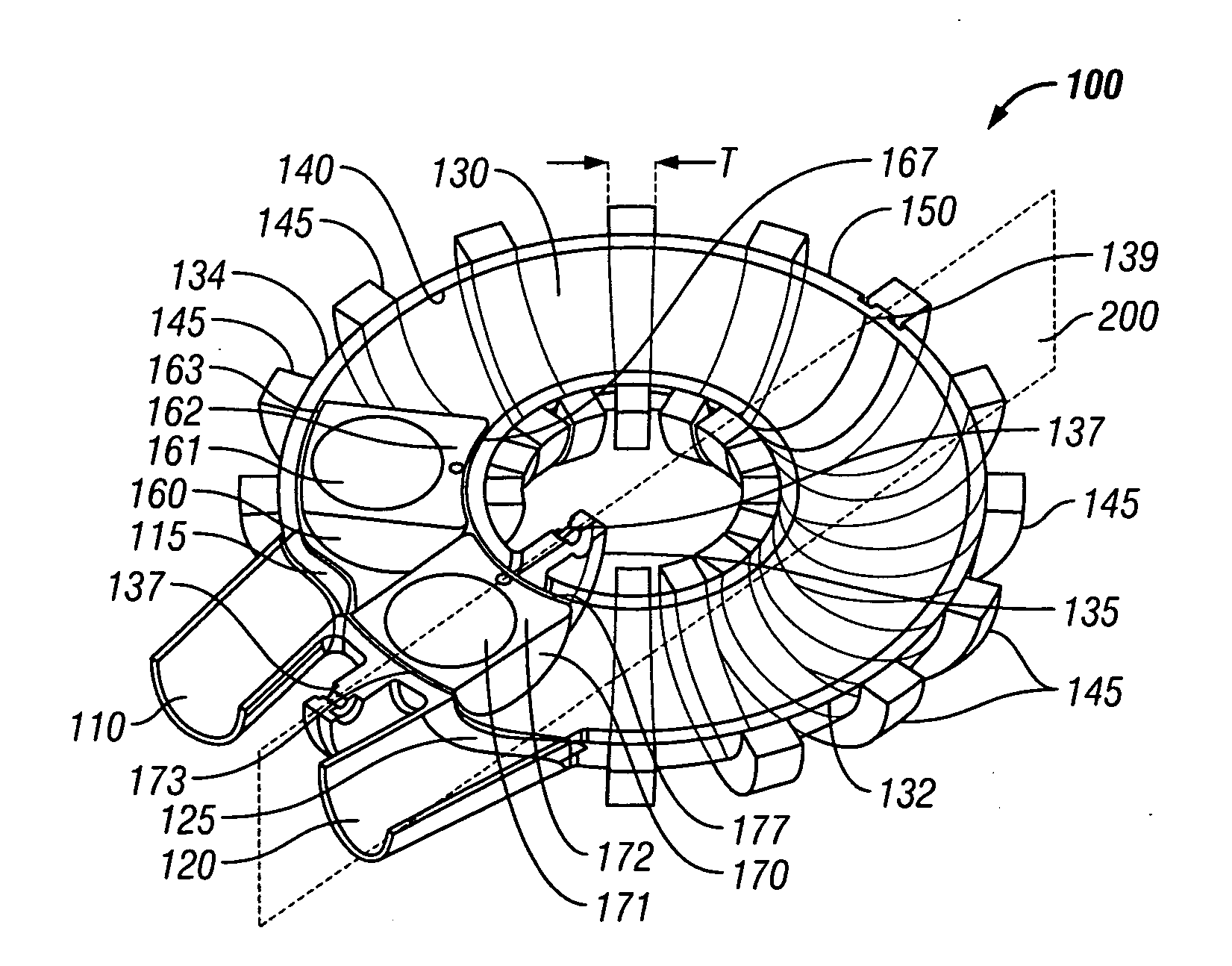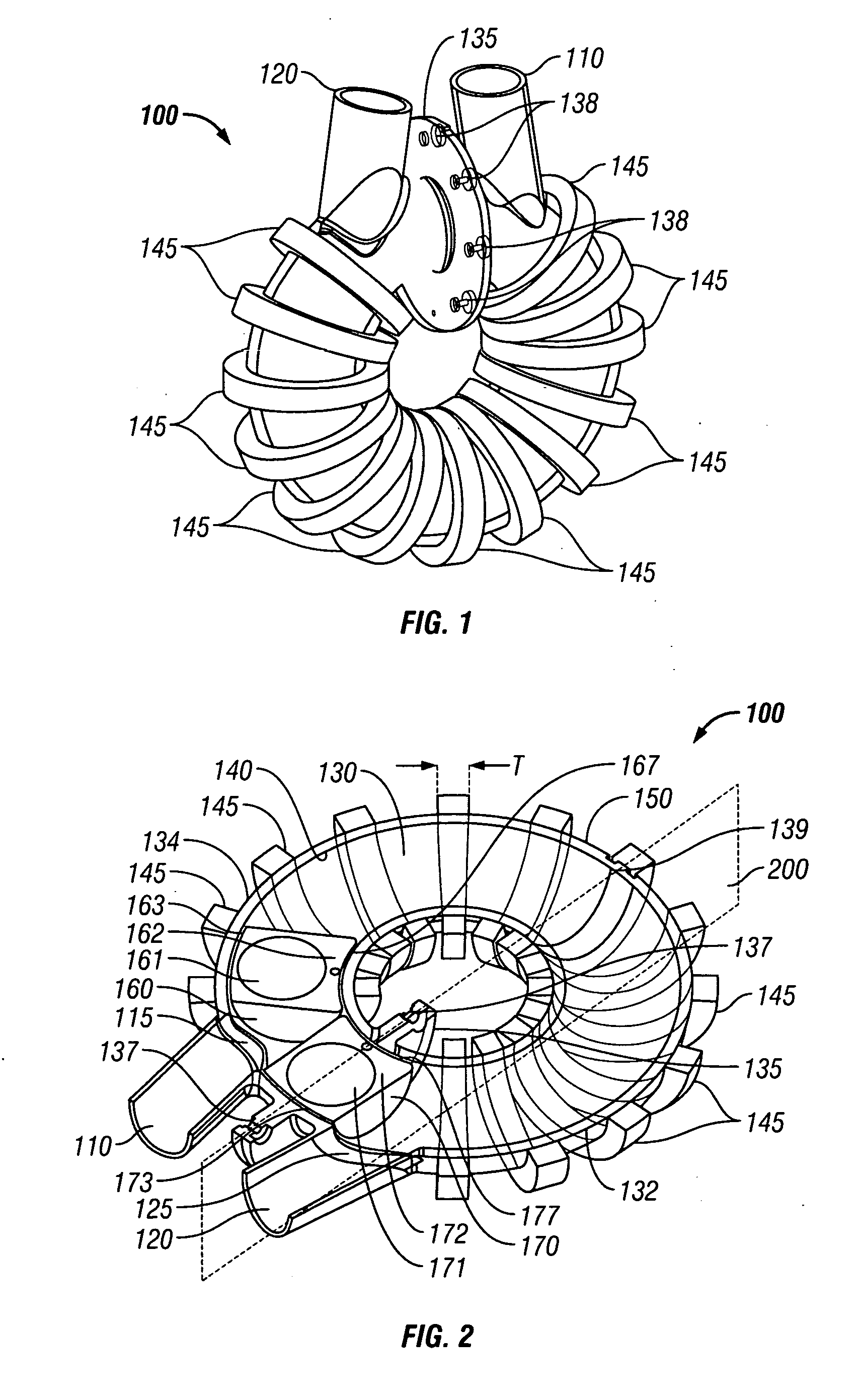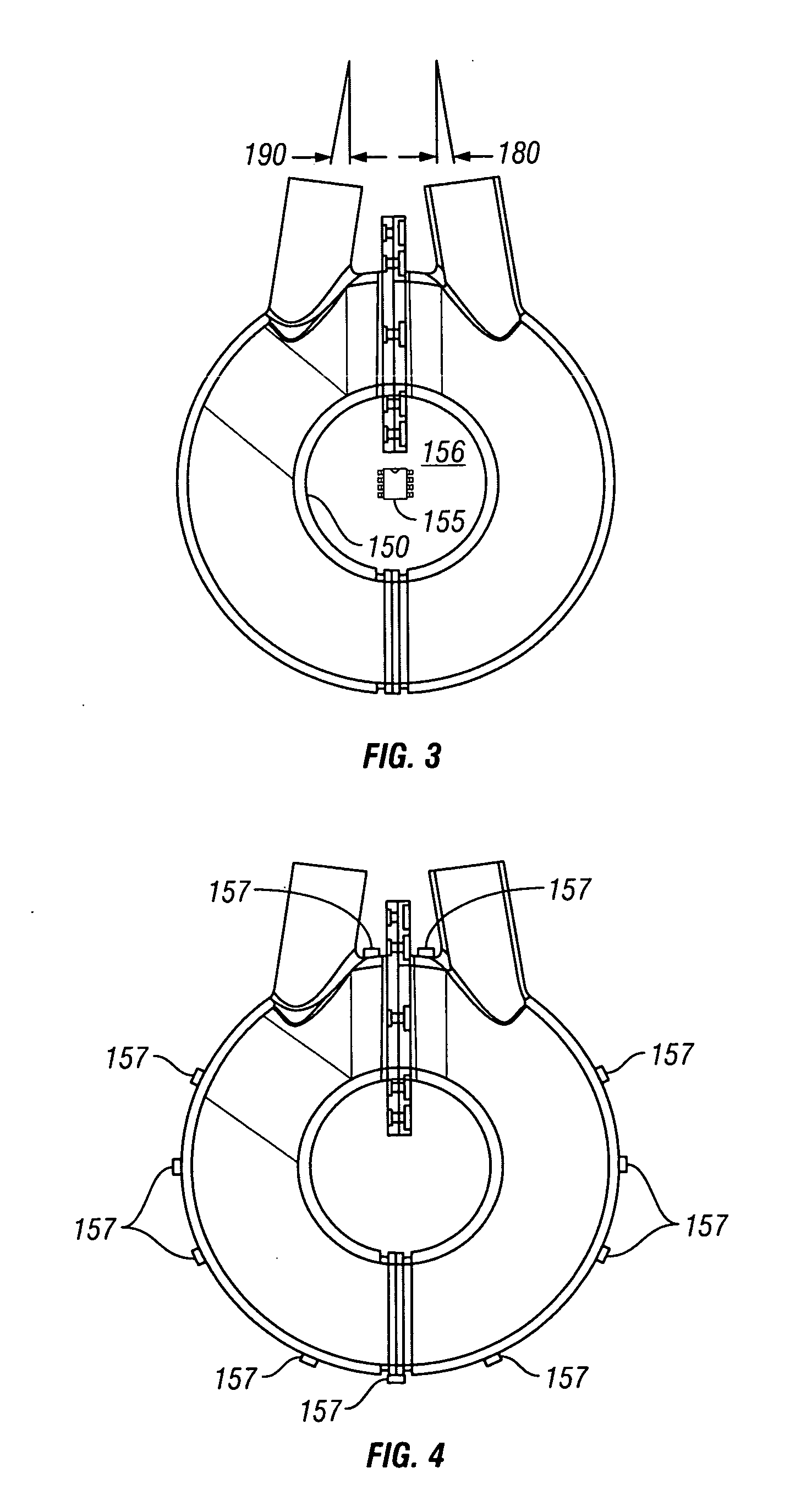Positive Displacement Pump System and Method with Rotating Valve
a technology of pump system and valve, which is applied in the field of pumps, can solve the problems of affecting the efficiency of the pump system, the inability to control the pumping process, and the inability to achieve the effect of reducing the energy of the fluid in the inflow and outflow lines, increasing the resistance to flow through this area, and being difficult to control
- Summary
- Abstract
- Description
- Claims
- Application Information
AI Technical Summary
Benefits of technology
Problems solved by technology
Method used
Image
Examples
Embodiment Construction
[0161]FIGS. 1 and 2 show a perspective and sectioned view, respectively, of a pump 100 with an inlet 110 and an outlet 120. It should be appreciated that pump 100 shown in FIGS. 1 and 2 is one exemplary embodiment, and the present invention should not be limited to the embodiment shown. The same is true for all other Figures, which are provided as examples only.
[0162]The embodiments illustrated in FIGS. 1-13 show a pumping chamber 130 forming a loop or ring comprised of an inner wall 140 and an outer wall 150 defining a lumen generated by the revolution of a two-dimensional enclosed contour, in this case a circle, about a coplanar axis lying outside the contour. It should be appreciated that many two dimensional enclosed contours can be used to define the lumen including a square, ellipse, polygon, conic, etc. It should also be appreciated that the revolution path should not be restricted to a circle. For instance, the enclosed contour may be swept around an oval, ellipse, etc. Pump...
PUM
 Login to View More
Login to View More Abstract
Description
Claims
Application Information
 Login to View More
Login to View More - R&D
- Intellectual Property
- Life Sciences
- Materials
- Tech Scout
- Unparalleled Data Quality
- Higher Quality Content
- 60% Fewer Hallucinations
Browse by: Latest US Patents, China's latest patents, Technical Efficacy Thesaurus, Application Domain, Technology Topic, Popular Technical Reports.
© 2025 PatSnap. All rights reserved.Legal|Privacy policy|Modern Slavery Act Transparency Statement|Sitemap|About US| Contact US: help@patsnap.com



